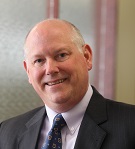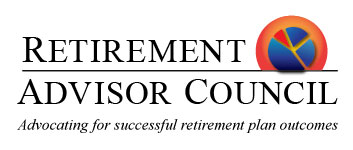
By Richard W. Rausser, Senior Vice President of Client Services at Pentegra
Although not available until January 1, 2022, for plan years beginning after December 31, 2021, Groups of Plans (GoPs) can reduce administrative burdens and costs. GoPs will probably be even easier to establish than MEPs and PEPs. It’s not too early to start thinking about your role as an advisor to both your existing clients and prospective clients. As an advisor, you know what types of plans your clients have and what their needs are. It may make sense to bring a group of small employers together to form a GoP, or put a new plan into an existing GoP.
Background
The SECURE Act (Setting Every Community Up for Retirement Enhancement Act) of 2019 was designed to make retirement savings easier for employees and the employers who sponsor their retirement plans. SECURE generated a lot of interest as it created a new type of retirement program – Pooled Employer Plans or PEPs – and eased the regulations for Multiple Employer Plans (MEPs). SECURE also provided for a new type of plan called a “Group of Plans” (GoP).
Although not available until January 1, 2022, for plan years beginning after December 31, 2021, GoP provisions are found in Section 202 of the SECURE Act. A GoP is a group of single-employer plans, related or unrelated, whose sponsors have chosen to affiliate with each other. One of the primary reasons to do so is to be able to file a single consolidated Form 5500 and (presumably) conduct a single audit for all plans in the GoP.
Requirements
Section 202 of the SECURE Act specifies that all plans in a GoP must first, be defined contribution plans and second, must have the same:
Trustee
Named fiduciary (or fiduciaries)
Administrator
Plan year
Investments/investment options
Defined Contribution plans
It makes sense that all the plans in a certain group are the same type, and the Group of Plans is no exception. To ensure this, SECURE wrote it into the act. All plans must be single account, defined contribution plans such as 401(k)s.
Same trustee
ERISA (Employee Retirement Income Security Act of 1974) mandates that assets of an employee benefit plan must be held in trust overseen by one or more trustees. The trustee must be named in either the trust document or the plan document, or appointed by a plan fiduciary. The trustee has oversight of the plan’s assets unless that responsibility is delegated to one or more asset managers.
Since all plans in the GoP must have the same trustee, that trustee must be agreed upon by the plans who are forming the GoP and their trust and plan documents amended to reflect that trustee.
Same named fiduciary
Every employee benefit plan must be established and maintained by a written plan document. This document specifies the ERISA section 402(a) Named Fiduciary for the plan, who is the main fiduciary responsible for the plan’s administration. In many cases, this is the employer who sponsors the plan; a different fiduciary can also be named by the plan document. Certain fiduciary responsibilities can be delegated to an ERISA 3(21) investment consultant and even more to an ERISA 3(38) investment manager, but not all.
A GoP is overseen by a named fiduciary who is the same for all plans in the group, so plan amendments will be required to name the GoP fiduciary for each plan.
Same administrator
A plan’s administrator is named by the plan document. If the document doesn’t name an administrator, it’s the plan sponsor. Certain administrative functions can be delegated to an ERISA 3(16) administrator, but not all.
Who will be the administrator for the GoP? Instead of the individual plan sponsors, it will have to be a person or entity agreed upon by the members of the GoP. This could be a possible sticking point since plan sponsors tend to be protective of their plans.
Same plan year
It just makes sense that all the plans in the Group of Plans have the same plan year, beginning on the same date, such as January 1 for calendar year plans. The only exception would be for a short plan year caused by a mid-year plan termination. A GoP would be a nightmare to keep track of if all the plans associated with it had different plan years, if not impossible. After all, one of the main reasons to group together in a GoP is to have a single Form 5500.
The vast majority of defined contribution plans operate on a calendar year basis, so this requirement may not be much of a hurdle. If a plan sponsor with an off-calendar-year-plan wants to join the group, the sponsor will simply need to amend the plan for calendar year status.
Same investment options
All plans in the GoP must have the same investments and investment options offered to their plan participants and beneficiaries. This makes administration and communication among plans easier, not to mention preparation of Forms 5500 for the GoP.
This requirement of the legislation will require plan sponsors to change their investment lineups to be the same as selected for the GoP. This aspect of a GoP is one that will be the most visible to plan participants since they will be directly impacted by the change. Good communication at this stage will be critical for the success of the implementation into the GoP from a single plan arrangement.
Plan design
SECURE doesn’t address plan design for GoPs the way it does for MEPs and PEPs, so each plan sponsor in a GoP can design their plan the way they want, with the features that work best for them and their employees.
Conclusion
The upside to GoPs is the ability to file a single Form 5500 for more than one plan, which can reduce administrative burdens and costs. The downside is that plans are still administered separately, not together as they are with MEPs and PEPs.
GoPs will also probably be easier to establish than MEPs and PEPs, although final guidance hasn’t been issued yet.
However, it’s not too early to start thinking about your role as an advisor to both your existing clients and prospective clients. As an advisor, you know what types of plans your clients have and what their needs are. It may make sense to bring a group of small employers together to form a GoP, or put a new plan into an existing GoP.
It’s all based on individual characteristics and preferences of the plans being brought into the GoP. Some things – like plan design features – can be different, but other things – such as the plan administrator, fiduciary and trustee – must be the same. As must the investments. How much control the plan sponsor is willing to give up could be a sticking point.
Planning and communication will be very important, especially when it comes to the plan investment options. It takes time to approve the plan amendments that will be required.
But first, the key players in the GoP – fiduciary, trustee, administrator – must be determined. How that will happen and how those people or entities will be selected will be specified by some sort of agreement that is part of the GoP setup.
How will all this come about? Stay tuned for guidance that will need to address all these issues. It never hurts, however, to be as prepared as possible if you’re thinking about working with Groups of Plans beginning in 2022.
About the Author
 Richard W. Rausser has more than 30 years of experience in the retirement benefits industry. He is Senior Vice President of Client Services at Pentegra, a leading provider of retirement plan and fiduciary outsourcing to organizations nationwide. Rausser oversees consulting, BOLI and non-qualified business development and actuarial service practice groups at Pentegra. He is a frequent speaker on retirement benefit topics; a Certified Pension Consultant (CPC); a Qualified Pension Administrator (QPA); a Qualified 401(k) Administrator (QKA); and a member of the American Society of Pension Professionals and Actuaries (ASPPA). He holds an M.B.A. in Finance from Fairleigh Dickinson University and a B.A. in Economics and Business Administration from Ursinus College.
Richard W. Rausser has more than 30 years of experience in the retirement benefits industry. He is Senior Vice President of Client Services at Pentegra, a leading provider of retirement plan and fiduciary outsourcing to organizations nationwide. Rausser oversees consulting, BOLI and non-qualified business development and actuarial service practice groups at Pentegra. He is a frequent speaker on retirement benefit topics; a Certified Pension Consultant (CPC); a Qualified Pension Administrator (QPA); a Qualified 401(k) Administrator (QKA); and a member of the American Society of Pension Professionals and Actuaries (ASPPA). He holds an M.B.A. in Finance from Fairleigh Dickinson University and a B.A. in Economics and Business Administration from Ursinus College.







































